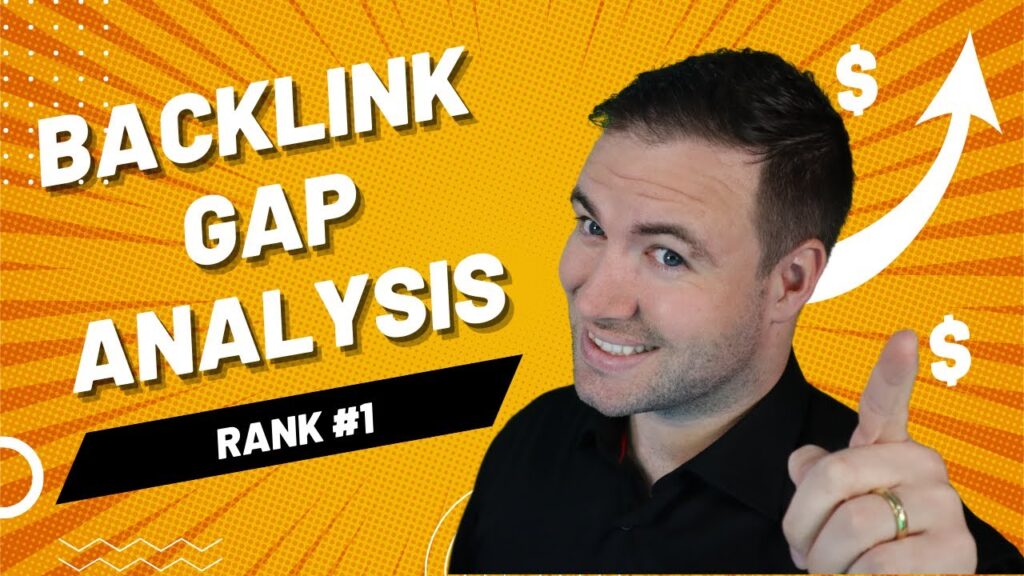Have you ever felt like you’re playing catch-up in the vast digital landscape? I remember when I first got an idea of what SEO really is, gazing enviously at my competitors who seemed to have it all figured out. One particular instance stands out - when I stumbled upon the concept of backlink gap analysis. It was a lightbulb moment that transformed the way I approached my marketing strategy. Today, I want to share that enlightening experience with you and help you tackle the complexities of backlink gap analysis. Are you ready to explore more? Let's dig dipper about this effective SEO technique.
TL;DR: Learn how to conduct a backlink gap analysis that will elevate your website's SEO by identifying valuable backlinks that your competitors possess but you lack.
Table of Contents
What Is A Backlink Gap Analysis
To give you an overview, a backlink gap analysis is a method used to evaluate the backlinks of competitors. Basically, it looks at which links they have that your site does not. Think of it like looking through someone else's recipe book. You want to see what ingredients they use that you haven't yet considered. Understanding these factors helps you create a more competitive online presence.
Importance In SEO Strategy
Why does this matter for your SEO strategy? Well, backlinks are a crucial factor in how search engines like Google rank sites. The more quality backlinks you have, the better your chances of ranking higher. It’s like building credibility. If credible sites link to you, it signals to search engines that you provide valuable content.
How It Affects Search Ranking
When conducting a backlink gap analysis, we can directly see how it affects our site's search ranking. If your competitors have significant backlinks pointing to their sites but you lack these, you're at a disadvantage. Each missing link is like a missed opportunity to reach potential customers. According to Boron from Osborne Digital Marketing, "If a competitor is good at finding relevant backlinks and your website lacks them, it places you at a disadvantage." That's something we need to take seriously.
Comparison With Other SEO Techniques
Backlink gap analysis isn’t the only technique in the SEO toolkit. But it stands out. While techniques like keyword optimization, proper anchor text, and content marketing are pivotal, they don’t directly improve your site's performance. In this case, backlinks play a fundamental role. They are like votes of confidence from other sites, signaling to search engines that your content is worth ranking. In comparison, on-page SEO focuses more on content and metadata but doesn’t encompass the external credibility that backlinks provide.
Common Misconceptions
There are certainly some misconceptions surrounding backlink analysis. One common myth is that quantity matters more than quality. In reality, having a few high-quality backlinks is far more beneficial than many low-quality ones. Another misconception is the idea that once you've done the analysis, you’re done. Not at all! This is an ongoing process. Regularly reviewing and adjusting your backlink strategy based on market shifts and competitor changes is key to sustained success.
In our pursuit of better SEO, this analysis serves as a vital tool. It helps draw a clearer picture of where we stand against our competitors and identifies actionable insights to improve our backlink strategy. Are you ready to find your backlink opportunities?
Getting Started: Tools And Resources
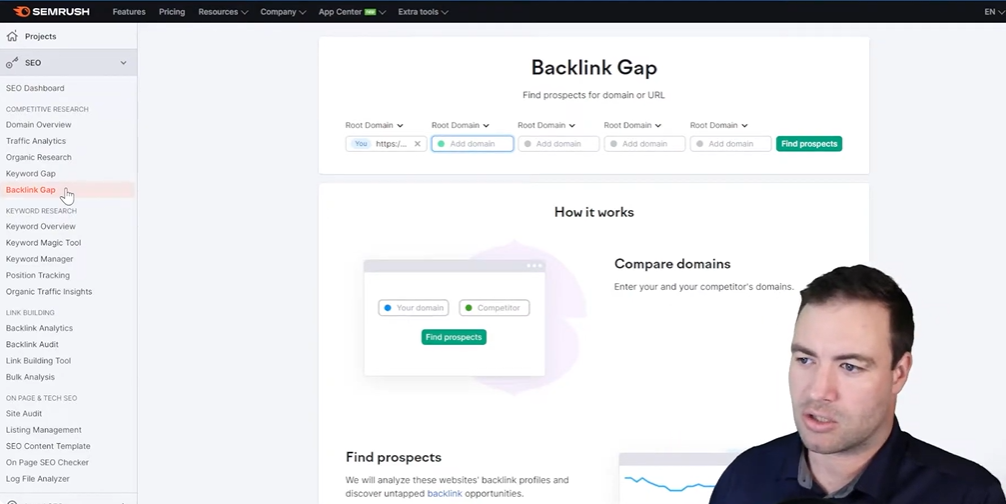
Overview Of SEO Tools For Analysis
When looking into SEO, having the right tools is essential. There are numerous SEO tools available, each offering unique features that can help us analyze our websites. Some popular ones include Ahrefs, Moz, and SEMrush. Each of these tools provides insights into keyword rankings, backlink profiles, and site audits. But as I’ve explored these options, I consistently find myself leaning toward SEMrush. Ahrefs has ans SEO API feature for easy SEO automation.
Why I Prefer SEMrush As My Backlink Gap Analyzer
So what makes SEMrush a standout choice for a backlink gap analyzer for me? It's simple: comprehensive features and user-friendly interface. While other tools can be powerful, they often overwhelm users with complex layouts and terminology. SEMrush feels intuitive. It presents data in a way that's clear and actionable. It's like having a friendly guide on a sometimes-overwhelming journey.
Key Features Of SEMrush
- Backlink Gap Analysis: This feature allows us to see which backlinks our competitors have that we don’t. Understanding this gap is crucial for improving our own website's authority.
- Link Graph Structure: SEMrush provides a visual representation of where our site stands compared to competitors. If you're missing any valuable backlink, this tool highlighted it vividly.
- Competitor Comparisons: We can easily analyze multiple competitor domains. This process helps in strategizing our link-building efforts effectively.
How To Set Up Your Backlink Analysis
Getting started with SEMrush is straightforward. Here’s how I usually do it:
- Create an Account: Sign up for SEMrush and log in.
- Input Domain: Enter your website's URL to see its overall performance.
- Conduct Backlink Analysis: Navigate to the 'Backlink' section. There, input your competitors' domains for comparison.
By following this approach, I can easily track my backlink's performance and see where I need to improve.
Learning Curve - What To Expect When Using New Tools
It’s worth noting that there is always a learning curve with new tools like SEMrush. I remember the first time I used it; it felt a bit daunting. But don't worry, the more you play around with the features, the easier it becomes. My advice? Spend some time with the tutorials offered by SEMrush. They break down complex concepts into bite-sized pieces that are easy to digest.
And remember, mastering any tool takes patience. Just like learning to ride a bike, it may feel wobbly at first, but with practice, it becomes second nature.
Conducting A Backlink Gap Analysis For Your Website

Step-By-Step Guide To Performing Analysis
When I first set out to conduct an analysis, I felt overwhelmed. So many metrics, so many competitors! But I learned it can be broken down into manageable steps. Here’s how you can perform your analysis:
- Gather Your Tools: For this analysis, I recommend using a reliable tool like SEMrush. It’s user-friendly and packed with features.
- Enter Your Website: Start by inputting your own domain. This is where we begin benchmarking.
- Input Competitor Domains: Next, enter the domains of competitors you want to analyze. Make sure they are direct competitors with significantly higher rankings.
- Analyze Backlinks: After running the analysis, examine the total volume of backlinks you have versus your competitors. Look for trends in the data.
Selecting Competitors To Analyze
Choosing the right competitors is crucial. I find it helpful to think about competitors who not only operate in the same niche but also rank well for the keywords you’re targeting. After all, what’s the point of analyzing someone who doesn’t compete with you?
- Look for businesses in similar geographical regions.
- Find those with a strong online presence and established authority.
- Evaluate competitor backlinks from those who are ahead of you in search results.
Interpreting The Data The Right Way - What The Numbers Mean
Now that we have the data, how do we interpret these long list o numbers? Each backlink contributes to domain authority. By comparing these list of numbers, you will see potential areas for growth. For instance, if a competitor has 300 backlinks and you only have 100, there’s a clear difference!
“Understanding these dynamics is crucial for effective SEO strategies.” – Boron, Osborne Digital Marketing
How To Identify Valuable Backlinks
Not all backlinks are created equal. Here’s how I discern valuable links:
- Authority: Assess the domain authority of the referring websites.
- Relevance: Ensure these backlinks are relevant to your niche.
- Commonality: Backlinks shared by multiple competitors often indicate higher value.
Time Management Tips For Beginners
Backlink analysis can be time-consuming. I recommend setting aside specific times for this task. Here’s what works for me:
- Allocate short, focused blocks of time - 30 minutes works well.
- Take breaks to avoid fatigue; fresh eyes are always better.
- Keep notes during your analysis to track insights effectively.
You can master this essential aspect of SEO with a systematic approach. Don't feel discouraged; every successful analysis takes practice!
Analyzing Competitor Backlink Profiles
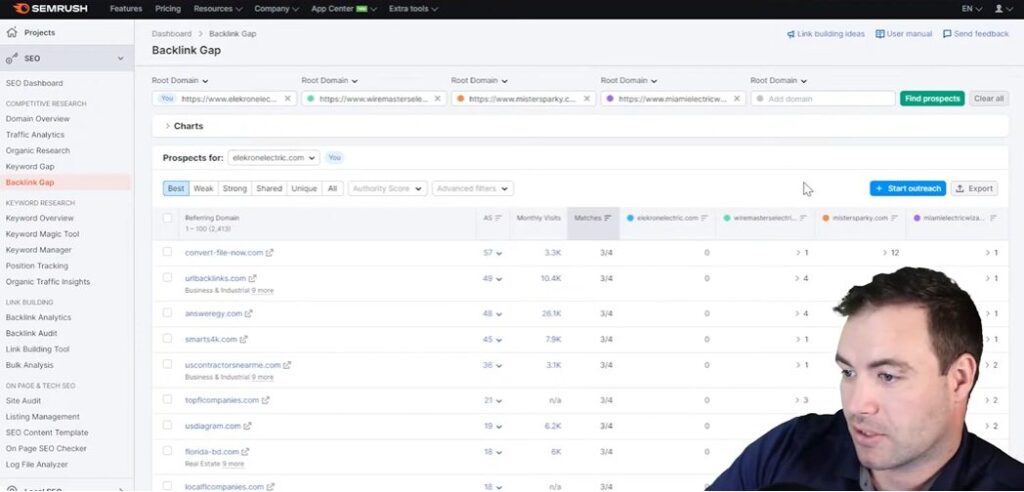
When we think about improving our website's ranking, we often wonder: how can we use competitor data to our advantage? One effective method is analyzing their backlink profiles. This process not only reveals their strengths but also highlights opportunities for us to grow.
1. How To Use Competitor Data To Your Advantage
Strategically leveraging what our business competitors do well can give us a significant edge. Start by identifying the top competitors in your niche by using a backlink profile checker. Next, use a reliable SEO tool like SEMrush, Ahrefs, Rank Lightning, and Majestic SEO to evaluate their backlinks. What links or URLs do they have that you don’t? This is often referred to as a back link gap analysis. SEMrush creates a list of referring domains that links to specific websites. It helps pinpoint valuable websites that you might want to reach out to for your own backlinks. Most of these SEO tools offer free usage. Just choose the right platform for your concerns and needs.
2. Common Backlink Attributes To Look For
Not all backlinks are created equal. Here are some common attributes to consider:
- Relevance: Is the site relevant to your niche?
- Authority: Does the site have a strong domain authority?
- Link type: Is it a dofollow or nofollow link?
Being aware of these attributes can help assess whether a backlink will truly benefit your site’s SEO. Make it the center of your priority to learn more about these attributes.
3. Understanding Domain Authority Vs. Page Authority
The terms domain authority and page authority can be a bit confusing. In short, domain authority relates to the overall strength of a website while page authority focuses on a specific page. A high domain authority often indicates better chances of ranking higher in search results, making it a crucial metric to consider.
4. Focusing On High-Quality Vs. Low-Quality Links
We are often tempted to chase after any backlink opportunity that comes our way. However, it’s essential to focus on high-quality links. A single link from a reputable site can outweigh multiple low-quality links. But how do we know if a link is low quality? Look out for:
- Spammy websites
- Links from irrelevant sources
- Websites that have a poor reputation
5. Red Flags - What Backlinks To Avoid
Some backlinks can actually harm your website’s authority. For instance, avoid links coming from link farms or low-quality directories. If a site has a sudden spike in links, that could also be a red flag. Always remember, quality over quantity is a must in backlinking.
By thorough competitor analysis, we can make informed decisions. Understanding what works for them might just be the key to unlocking new doors for our own site's success!
Building Your Backlink Strategy
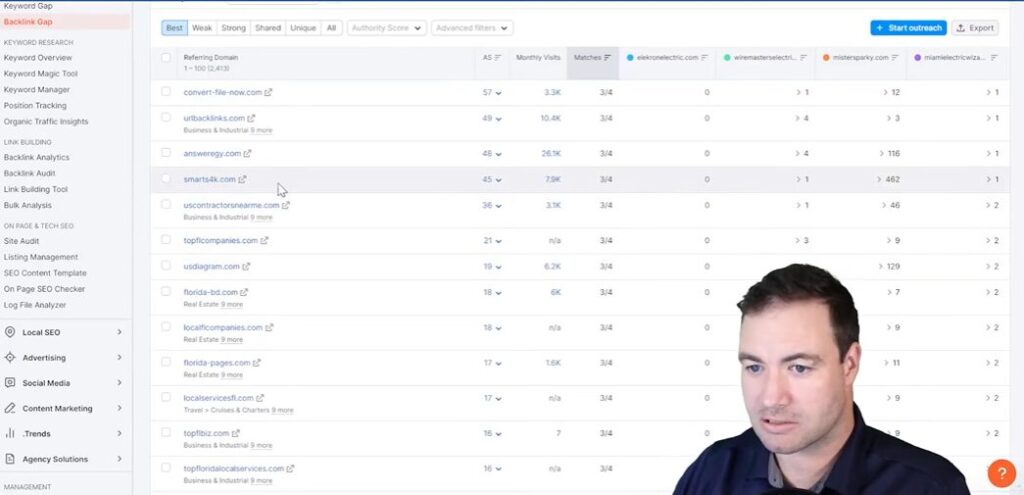
1. Crafting Effective Outreach Emails
When we talk about outreach, think of it as opening a door. You want to be welcoming, yet direct. Crafting effective outreach emails is a game changer in creating a backlink strategy.
Start with a strong subject line. What’s going to get someone’s attention? Keep it simple and relevant. I often opt for something like, “Quick Question About Your Recent Article” - straightforward, right?
When writing the email, keep it concise. Introduce yourself and your purpose in a few sentences. Establish the connection. Why are you reaching out? Mention something specific they did that you appreciated. This builds rapport.
Don't forget to include a clear call to action. It could be a request for collaboration or feedback. People are far more likely to engage if they understand what you want them to do.
2. The Role Of Content In Attracting Backlinks
Content is king. But what does that mean? Well, high-quality content naturally attracts backlinks. The more valuable your content is, the more others will want to link to it.
Think of it this way: If you're creating an ultimate guide or a unique case study, others in your industry may link to it out of respect or as a helpful resource. It’s not just about quantity; quality matters.
- Infographics: They’re visually appealing and condensed, making it easy for others to share and link back.
- Research: Original studies can act as a magnet for interest. The more unique your finding, the more it will be referenced.
- How-to articles: These provide step-by-step guidance, making it easy for readers to learn and share.
3. Guest Posting And Collaborations
Guest posting is like an exchange of gifts - you give content, and in return, you get a link back to your site. It’s mutually beneficial.
Start by reaching out to websites in your niche that accept guest posts. Just make sure their content aligns with yours. This isn’t just about backlinks; it’s about establishing relationships within your industry.
Collaborations can also extend beyond guest postings. Consider interviews or co-hosting webinars. These opportunities can foster a connection that leads to more backlinks down the road.
4. Monitoring Opportunities You're Missing
Once you’ve secured backlinks, what’s next? Monitoring is key. Backlinks can change. They may be removed, or their relevance might diminish over time. Using free tools like SEMrush helps streamline this process.
Evaluate the performance of these links. Is traffic coming in? Are they ranking well? I often analyze these metrics monthly, ensuring nothing slips through the cracks.
5. Regularly Reviewing And Updating Your Strategy
Your backlink strategy isn’t a one-time endeavor. It needs constant attention. Just like your garden, it requires regular watering and weeding.
Set aside time each month to review your links. Which sources are bringing in traffic? Which aren’t? Make adjustments where necessary. Perhaps there are new websites emerging in your field that deserve your attention.
Keeping your strategy fresh is essential. It reflects the changing nature of your industry and your audience’s needs. Don’t be afraid to pivot!
Learn From Your Results: Continuous Improvement
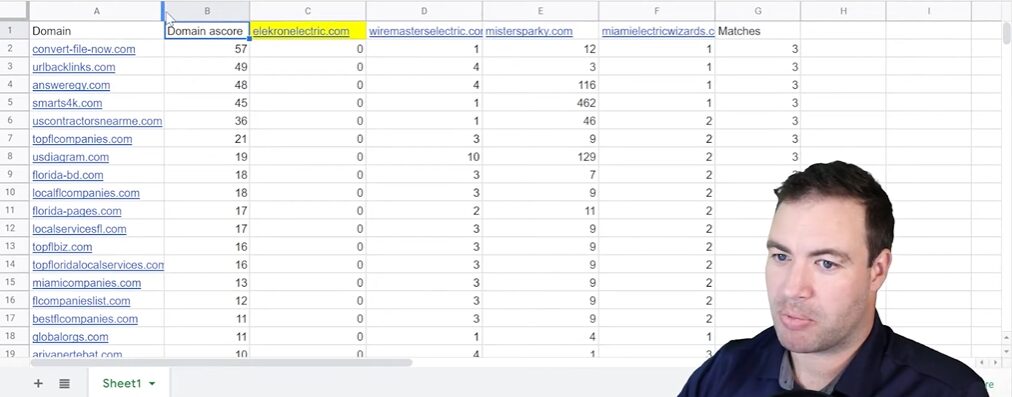
How To Track Sites For Progress
Tracking the effectiveness of your new backlinks is vital. But how do we do it? First, I recommend using tools like SEMrush or Ahrefs. They help monitor not just the presence of backlinks but also their impact. You’ll see how they affect your rankings over time.
To track backlinks, focus on three metrics: link acquisition rate, referral traffic, and keyword rankings. If you notice a spike in traffic following new backlinks, you’re on the right track.
Using Analytics To Gauge Improvement
Using analytics is crucial for gauging improvement. Google Analytics is a fantastic yet free tool that is helpful in SEO. It allows us to connect changes in traffic to our backlink strategy. By tracking metrics like session duration and bounce rate, we can understand how engaged our visitors are.
- Set clear goals: What are we aiming to achieve?
- Monitor referral sources: Are people coming from those new links?
- Evaluate conversion rates: Are these visitors taking desired actions?
The Importance Of Continuous Learning
In the world of SEO, continuous learning is essential. Search engine algorithms change constantly. What worked yesterday may not work today. This means we must stay updated.
When was the last time you read about the newest trends? Engaging with SEO communities or following industry blogs can provide fresh insights. It’s like refreshing a garden; we need to keep nurturing our knowledge to grow.
Building A Repeatable Process For Analysis
Creating a repeatable process makes everything easier. I suggest laying out a roadmap. Start with data collection. Track backlinks using your preferred SEO tools. Then, assess their performance regularly.
- Collect data on backlinks.
- Monitor their effect on traffic.
- Analyze the quality of these links.
Adjusting Strategies Based On ROI
ROI is the name of the game. If a backlink isn’t delivering results, we need to adjust our strategy. Perhaps it’s time to chase links from different sources. Or maybe focus on improving the quality of existing links.
I’ve been there. I’ve chased after links that just don’t pay off. It’s crucial to ask ourselves: Is this strategy worth my time and resources?
By staying flexible and ready to pivot, we can maximize our backlink efforts. This not only enhances our rankings but also boosts our search engine rankings.
Conclusion: Embrace The Power Of Backlinks
As we draw to the end of our exploration into backlinks, I want to take a moment to recap some key points we've discussed. Understanding how to conduct a backlink gap analysis is crucial. It allows us to evaluate not only our own site's backlinks but also those of our true competitors. This enables us to identify solutions for backlink and content gaps that could be impacting our search rankings.
To put it simply, a well-executed analysis can transform your web presence. Imagine standing at the base of a mountain. Your competitors are already at the peak, leveraging all the backlinks they possess. By analyzing these connections, we can find our path to the top. The links that our competitors have can often be the very ones we need to pursue.
The Importance Of Analysis
Through this analysis, we acquire insights into what's working. This understanding is not static. Rather, it's a continuous cycle of learning and adapting. Are we testing new strategies? Are our efforts yielding results? Regularly revisiting our analysis helps fine-tune our approaches. Just as in any aspect of life, growth comes from ongoing adjustment and responsiveness.
Final Thoughts For Newcomers And Pros
For those just joining the world of SEO, don't be intimidated. Think of backlinks as bridges to your website or your client's. The more solid bridges you build with credible websites, the easier it is for users to find you. And for seasoned professionals, remember to keep an open mind. New tools and techniques continually emerge. Staying updated for your SEO agency is essential.
I invite you to share your insights or experiences with backlink strategies in the comments. Let's learn from each other. Perhaps you’ve discovered a particularly effective method or tool? Your contribution could make a difference for someone else.
In conclusion, embracing the power of backlinks is essential for your link building strategies and online presence. They are more than mere connections; they serve as a testament to your site's value. The journey doesn't need to be lonely. Together, we can master the art of backlinking and watch as our web traffic improves.
